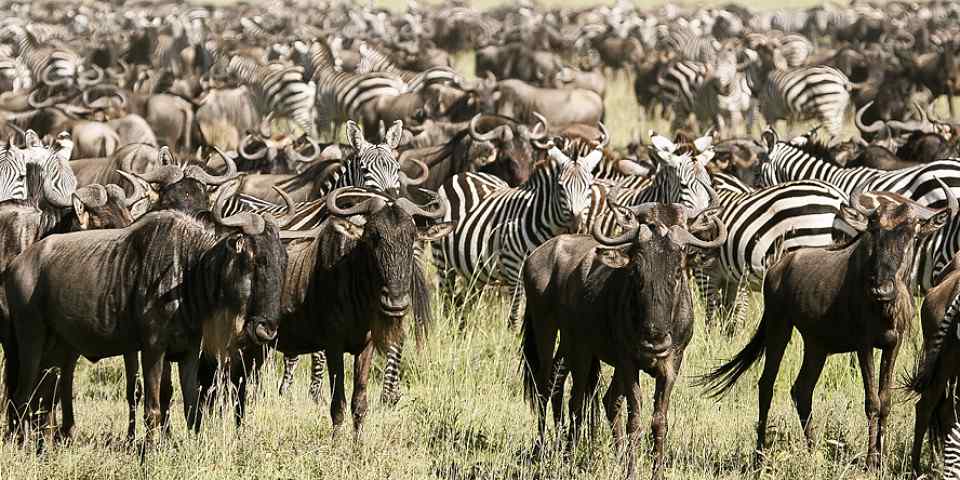Tanzania offers excellent wildlife viewing. If it’s your goal to tick off the Big Five, you’re in luck. Elephant, buffalo and lion are easily seen. If you’re visiting the Ngorongoro Crater, you’ll probably spot black rhino too. Although common, leopards are very secretive. This makes any encounter with the most elusive of the big cats extra special.













Wildebeest Migration
The wildebeest migration is one of Africa’s greatest wildlife spectacles. At least 2 million hooved animals – mainly wildebeest, but also zebra and gazelle – move around the Mara-Serengeti ecosystem. Highlights of this 800km/500mi circular trek include the wildebeest calving on the Southern Serengeti plains and the dramatic Mara River crossings in the north.
Wildlife Highlights
Tanzania is home to more than 30 meat-eating mammals. There are cats, wild dogs, jackals, hyenas and many smaller carnivores, such as mongooses and genets. Small cats include caracal, serval and African wild cat. Wild dogs are mostly found in the southern parks, but bat-eared fox and black-backed jackal are more widespread. Getting out at dawn offers the best chance to see many of these fabulous creatures.
Best Time for Wildlife Viewing
The Dry season (June to October) is the best time for wildlife viewing. The Wet season (November to May) is more beautiful and tourist numbers are lower. The best time for seeing the wildebeest calving is January to February (Southern Serengeti) and June to October for the wildebeest migration (Western and Northern Serengeti). The parks in the Southern and Western circuits are less accessible in the long rains (March to May) and some lodges close during that period.











